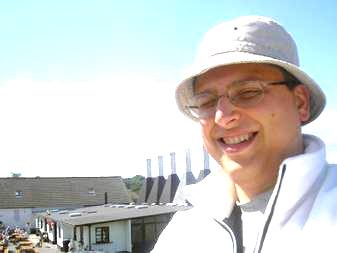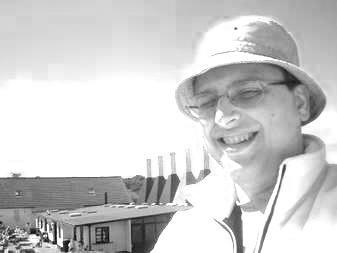


use strict;
use Prima;
die "need image\n" unless @ARGV;
my $source = Prima::Image-> load($ARGV[0]);
die "Can't load $ARGV[0]:$@\n" unless $source;
my $mask = Prima::Image-> new(
width => $source-> width * 2,
height => $source-> height * 2,
type => im::BW,
);
my $step = 2;
my @size = $mask-> size;
my $max = $size[$size[0] < $size[1]] / 2;
my @center = map { int($_ + .5) } ($size[0] / 2, $size[1] / 2);
$mask-> begin_paint;
$mask-> clear;
$mask-> lineWidth( $step);
for ( my $i = 0; $i < $max; $i += $step * 2) {
my $d = $i * 2;
$mask-> ellipse( @center, $d, $d);
}
$mask-> end_paint;
Here's the result:

use IPA qw(Misc);
$source-> type(im::bpp24);
my @channels = @{ IPA::Misc::split_channels( $source, 'rgb') };
$channels[0]-> put_image(
243, 159,
$mask, rop::AndPut
);

 Prima can do direct blitting operation without resorting to GUI functions. It
is both faster and lossless, and thus is preferred when possible. Note that the
very same call, put_image, if called from within begin_paint
/ end_paint brackets, gets executed using GUI functions.
Prima can do direct blitting operation without resorting to GUI functions. It
is both faster and lossless, and thus is preferred when possible. Note that the
very same call, put_image, if called from within begin_paint
/ end_paint brackets, gets executed using GUI functions.
Finally, the three channels with the mask applied with different offsets, can be combined back to an RGB image:
my $output = combine_channels( \@channels, 'rgb');
$output-> type(im::bpp8);

push @img, $output;
my $saved = Prima::Image-> save(
"anim.gif",
images => \@img,
loopCount => 0,
delayTime => 5,
);
die "Cannot save anim.gif:$@\n" unless $saved == @img;
Here is the final result:

use strict;
use Prima 1.27;
use IPA qw(Misc);
die "need image\n" unless @ARGV;
my $source = Prima::Image-> load($ARGV[0]);
die "Can't load $ARGV[0]:$@\n" unless $source;
$source-> type(im::bpp24);
my $mask = Prima::Image-> new(
width => $source-> width * 2,
height => $source-> height * 2,
type => im::BW,
);
my @size = $mask-> size;
my $max = $size[$size[0] < $size[1]] / 2;
my $step = 2;
my @centers = (
[ 243, 159 ],
[ 208, 150 ],
[ 233, 111 ],
);
my @img;
for ( my $offset = 0; $offset < $step * 2; $offset++) {
$mask-> begin_paint;
$mask-> clear;
$mask-> lineWidth( $step);
my @center = map { int($_ + .5) } ($size[0] / 2, $size[1] / 2);
for ( my $i = 0; $i < $max; $i += $step * 2) {
my $d = $offset * 2 + $i * 2;
$mask-> ellipse( @center, $d, $d);
}
$mask-> end_paint;
my @channels = @{ IPA::Misc::split_channels( $source, 'rgb') };
for ( my $i = 0; $i < @channels; $i++) {
$channels[$i]-> put_image(
$centers[$i]->[0] - $center[0],
$centers[$i]->[1] - $center[1],
$mask, rop::AndPut
);
}
my $output = combine_channels( \@channels, 'rgb');
$output-> type(im::bpp8);
push @img, $output;
}
my $saved = Prima::Image-> save(
"output.gif",
images => \@img,
loopCount => 0,
delayTime => 5,
);
die "Cannot save output.gif:$@\n" unless $saved == @img;